Oh Dear...
If you're new here, you may want to subscribe to my RSS feed. Thanks for visiting!
Well, I would not have guessed this. Normally I value new thoughts on classic ideas asteaching news isn't like doing something totally new day after day. Sure it's not like making car seats all day long yet you can always find something to shake up a bit. Even if you do not accept the beauty of life lives within the changes. Let us see what lengths we have to go.
It looks like the post-hacking cleanup is ongoing. The site has been reset to its defaults as I've installed a fresh version of the theme I was using, so bear with me if things look odd or difficult to use.
If you are an edu-blogger or any other kind of blogger, be sure to keep your blogging platform up to date AND your themes up to date, and don't keep old themes or other things lying around. They can be very bad.
"The job of an educator is to teach students to see the vitality in themselves."
news.
Possibly Related Posts:

Ms. DeLong’s Dual Language Kindergarten
This year, I have the privilege of collaborating with Ms. DeLong, a Kindergarten teacher at GES. Currently, we are serving two ESOL students in this classroom. We have very little sheltered language training at GES as our ELL population has only begun to increase at a more rapid rate only in the last two years. We rely on resources that we glean on our own and share with each other. Recently, I shared with Ms.
"With that in mind, I'd really like you have a look at it in another point of view. Putting ESL activities into the middle of the conversation is going to turn it to a different degree completely. Given that theory is always a tad different ."
DeLong the following article “WIDA Focus on The Early Years: Dual Language Learners.” I am so proud to see that Ms. DeLong is proactively doing so many things this article talks about to make her Kindergarten classroom dual language friendly.
1). Ms. DeLong constantly refers to her non-English speaking student to say things in their language and to spotlight the things they already know. Ms. DeLong uses Google Translate on a regular basis to help her translate words/phrases into Spanish. For example, when Ms. DeLong teaches numbers in English, she also teaches them in Spanish. I recently participated with Ms. DeLong as she was teaching her Kindergartner’s the Letter “O” through the activity entitled “O is for Owl.” On the board, she wrote “I see the owl” and alongside she wrote “Veo el búho.” She had one of our Spanish speaking students repeat this Spanish phrase and teach the rest of the class.
2). Ms. DeLong uses Google Translate to write daily messages to one Spanish-speaking parent (who speaks no English) in the agenda to communicate how the student’s daily progress in class or to communicate upcoming events or needs. She also just wrote the student’s entire interim report in Spanish by using this translating engine. This was an enormous help to me as collaborating ELL teacher-as I currently work K-12 and the job of translation for each and every parent is becoming an increasing task. Ms. DeLong also encourages our non-English speaking parent to participate in classroom and PTA events-with the help of Spanish speaking volunteers and myself.
3). Ms. DeLong utilizes dual language story books and other resources in class to help the second language student understand and feel accepted. She independently seeks out dual language story books from our library and also utilizes dual language story books from Reading A-Z.
4). Ms. DeLong constantly communicates with me-the ELL teacher-to make sure the needs of our dual language students are met. Her concern and care for my ESOL students is equal to that of each and every one of the students in her class. I’m SO appreciative of her openness, flexibility, and patience. Thank you Ms. DeLong for going the extra mile to ensure our Kindergarten ESOL students have a wonderful kindergarten experience!!

Following is a picture of a class activity in which all students created dual language posters re: to colors and the letter “c.”

I really hope you've found this post as appealing as I did. I am interested in hearing your thoughts over it in the comments section. If it has rised your curiosity upon English teaching there are plenty of regarding this on here as well.
#TeacherCPD Conferences by @TeacherToolkit and @CazzWebbo
One hot sunny afternoon earlier this summer, I re-tweeted a link to a Google document list of edu-teacher focused CPD events in the United States. @cazzwebbo saw it and said, “but it’s all USA focused events – we need one for the UK!” Subsequently we set about creating our own UK-based Google document, and within a couple of hours, had created #TeacherCPD conferences across the UK; a database to help capture and display UK focused CPD events.
TeacherCPD conferences across the UK:
There are quite a few entries in the database already. It’s a grassroots type list, with contributions made by educators, for educators. The more everyone populates the database, the more it will circulate and benefit everyone. Perhaps your own educational establishment organising CPD events and courses for external participants – could you ask them to add anything they are trying to promote?

This is not another version of the existing GoodCPDGuide. which launched in January 2012, offering a free database of CPD resources for education, including consultancy services, books, videos and podcasts. #TeacherCPD conferences across the UK is for CPD events only, organised by teachers for teachers. That’s it!
Listing CPD events:
You can see the list and contribute any CPD events by clicking on the image below:
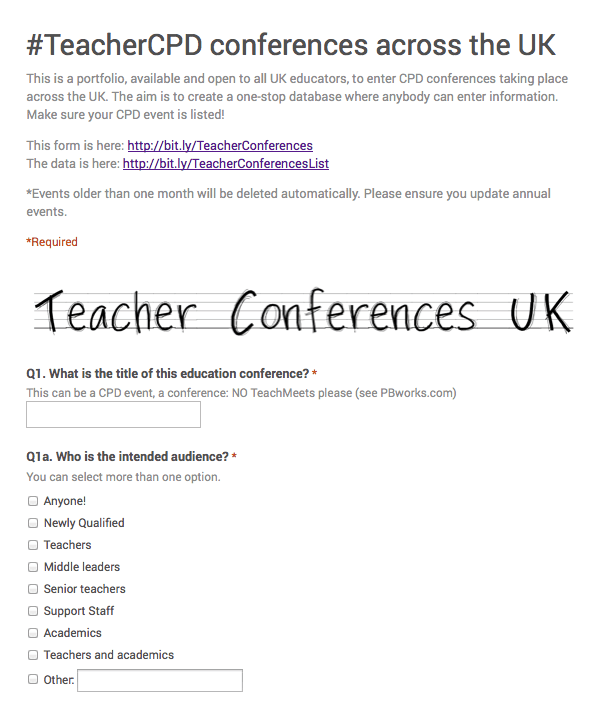 Click the image above to open the full database
Click the image above to open the full databaseEvidence:
If you need any evidence to convince your educational establishment that CPD events are worth attending and paying for, here are a few thoughts from Ofsted:
An Ofsted report outlined key findings on the impact of CPD on teaching and achievement. These included the following:
Despite weaknesses in the evaluation methodology of the survey schools, well planned professional development had improvedteaching, helped to raise standards and contributed to staff retention and promotion.
Teachers who had been involved in CPD that was carefully designed, for example to develop their competence in areas such as assessment or ICT, had made gains in their knowledge and understanding. This was beginning to be reflected in their teaching and in pupils’ learning. The keys to success were thorough, focused planning, and regular monitoring. The following example from a secondary school illustrates the point.
The same Ofsted report also outlined findings related to the impact of CPD on staffing, including:
The survey found that well planned CPD had a positive effect on the recruitment and retention of staff.
"Soap and education are not as sudden as a massacre, but they are more deadly in the long run."
It contributed to high morale and enthusiasm for teaching. The headteacher at one secondary school, for example, made effective use of newly created posts, such as secondments to refresh some of the long-serving staff.
Many schools reap the benefits of providing high quality professional development for their support staff. This led to better support for teachers and pupils and, on occasion, provided a solution to staffing problems, as the following case study illustrate: A secondary school with a long-standing difficulty in recruiting good religious education teachers recognised potential in a voluntary helper. The headteacher appointed him as a teaching assistant, supported him through a part-time foundation degree in the subject at a local university, and then gave him the opportunity to work in the school as an unqualified teacher. He joined the Graduate Teacher Programme and gained qualified teacher status. Because of its support for this teacher, the school has resolved a difficult staffing problem.
The database:
Click the image to view the CPD events listed by teachers, for teachers. Your feedback is welcome on developing the database. Do you think you could add to the database and share the list?
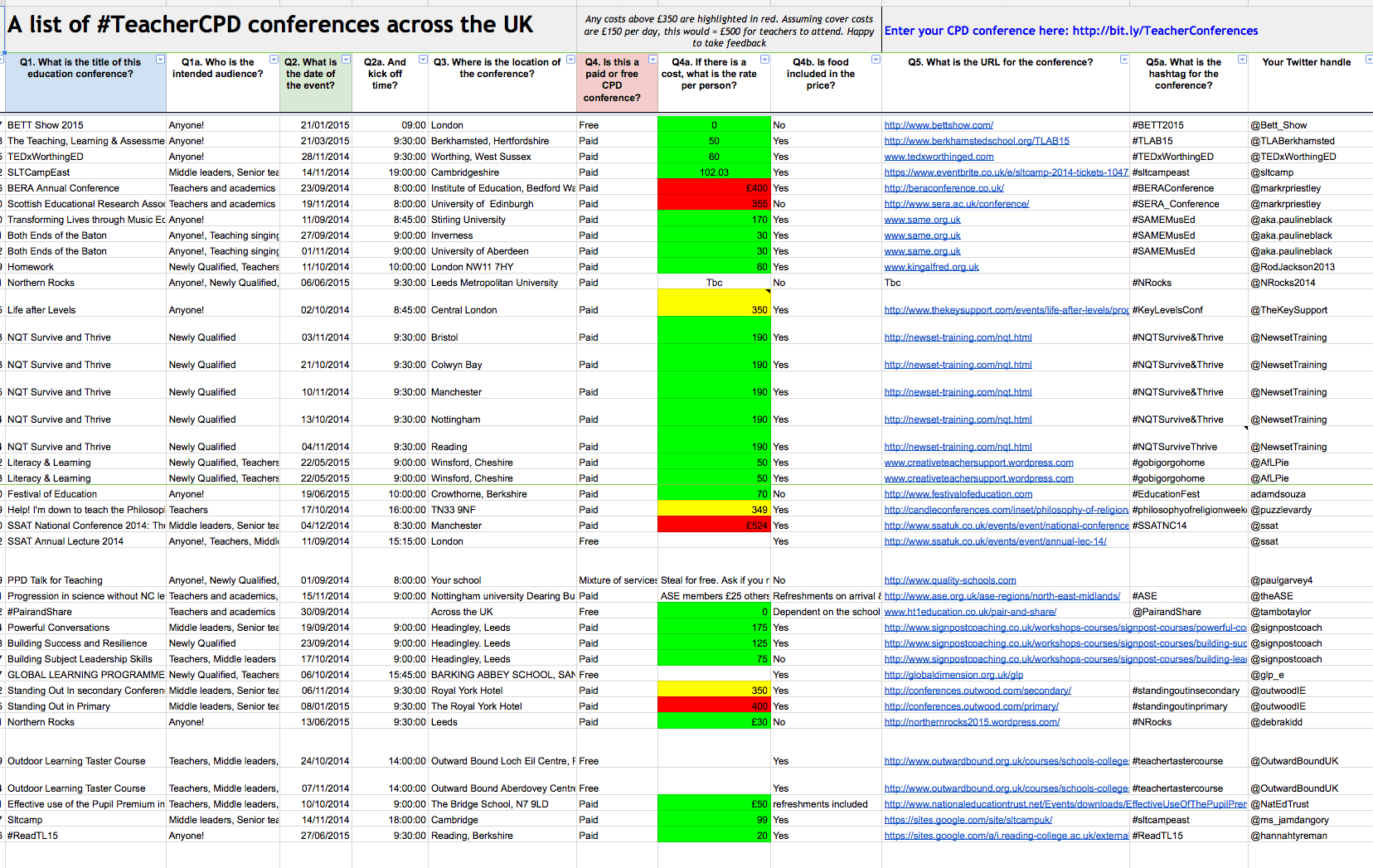
References:
Ofsted (2006) Doc Ref HMI 2639
Thank you to @CazzWebbo for her support in making this happen.
Like this:
Like Loading...
Related
The most followed teacher on Twitter in the UK who writes one of the most influential blogs on education in the UK and across the world. Award winning Deputy Headteacher; Author of 100 Ideas: Outstanding Lessons and writer for The Guardian Education. Founder of @SLTchat and co-author of the #5MinPlan. Championed #TMLondon @MyEdHunt and @SLTeachMeet; plus one of first UK teachers to venture into the unknown, with pay-per-download teacher resources.
I wish you've found this post as remarkable like I did. I'm interested in hearing your words about this within the comments section. If it has got rised your curiosity upon ESL activities you can find more about this on here as well.
Puzzles, Puzzles, Puzzles

Puzzles help students to build critical thinking skills, problem solving abilities and logical, step by step thinking. All of these thinking processes are the same thinking processes that are necessary for students to think out a math problem, make connections between things they read, and understand scientific processes. So, why aren’t all of our students doing puzzles in class every day? Mainly because puzzles are seen as an “extra” that we play with when we have some extra time. With everything teachers have to have in their lesson plans, puzzles often feel like something we don’t have time for. So, how do we find the time for puzzles?
1.) Use puzzles to teach or practice content. Self correcting puzzles can help students use puzzles each day. In my teachers pay teachers store, you can find self correcting puzzles for word families and for a variety of math topics. If there is a topic you’d like a puzzle for that I don’t already have in more store, you can download my Self Correcting Puzzle Template and create puzzles for any topic you need. These puzzles make great centers and small group activities and encourage all of those thinking skills that puzzles initiate.
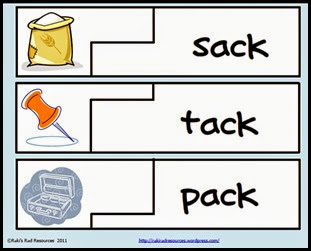


2.) Model how to solve puzzles while modeling how to solve math word problems. Tiling puzzles are often extremely challenging for students when they are first introduced. Because of this, I recommend working through the first puzzle with students in a modeled “think aloud” process. When modeling puzzles like these, take the time to highlight for students how similar these same thinking processes can be used to solve a word problem.
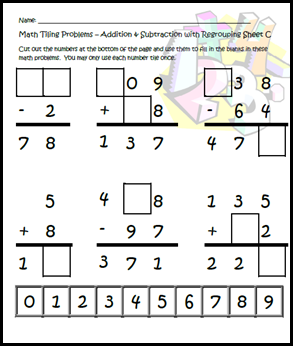
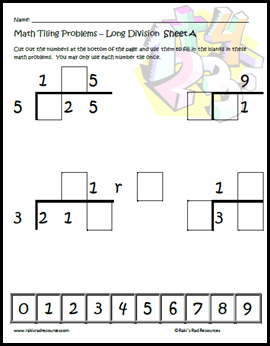

3.) Use puzzles to practice geography. Include map puzzles into your Maps and Globes unit. Let students take the time to put together those continents or the states of the US and they will have a much more concrete understanding of how those locations relate to each other.
4.) Let students have 5 minutes each day to work on puzzles as an activator. Set up four or five regular jigsaw puzzles in empty pizza boxes. Small dollar store puzzles work best as they tend to be very small when complete – and they’re cheap! Assign students to a puzzle by simply writing their names on the top of the pizza box (this is a great time to build in differentiation by leveling the pizza boxes with puzzles of different difficulties and grouping your students accordingly). At the beginning of your math block, set a timer for five minutes and let the students get their pizza box and work on their puzzle until the timer runs out, in an exercise to warm up their brains and get them ready for critical thinking. When a group completes a puzzle, hand out a simple award (I like stickers.) and replace the puzzle with a new one.
5.) Assign puzzles for homework. Students and parents alike complain about homework, but who is going to complain about working on a puzzle? Send home tiling puzzles once students have had some exposure to these types of puzzles or have students work on puzzles using a website like Jigzone.com.
What interesting ways do you have to incorporate puzzles into your classroom?

http://feedproxy.google.com/~r/rakisradresources/NlKY/~3/GvNB18PkOd4/puzzles-puzzles-puzzles.html
If you like to learn more aboutkindergarten worksheets exercises you should check out here. It has infinite supply of wonderful ideas to check out. I'd really like to know your opinions on the subject when you've got anything to write about. Leave a comment or hit me up with an email when you prefer.
Pedagogical Practices For Early Readers

by Marvin Wacnag Lidawan
Oct 5, 2014 Reading 115 Views
"I believe the children are our future Teach them well and let them lead the way... " From, The Greatest Love of All, George Benson
Foundations of good reading among children are the same regardless of their gender, background or special learning needs.In other words, all children use the same processes in learning to read. Some children may be slow readers while others may be fast absorbers but all of them can ultimately master the same basic skills for fluency and comprehension. The three main interrelated goals for reading are: fluency, comprehension and motivation. Fluency is one's ability to identify words accurately and read text fluently with good expressions. It is achieved through reading made- easy books about familiar subjects. Children are enhanced in phrasing gaining more meanings through the texts they read. Comprehension is to understand, reflect on and learn from text. This includes: prior knowledge, experiences, language skills and higher-level thinking. The third is motivation to read which is tantamount to oil which lubricates the engine to move. Motivational factor is crucial to start with the process. Books, poems, pictures, charts and other resources could be ideal that catch the interests of early readers. Intensive research about early reading in Ontario Canada (2003) showed that reading concepts are the knowledge and skills that children should be equipped with in order to read with fluency and comprehension: oral language, prior knowledge and experience, concepts about the print,phonemic awareness, letter-sound relationship, vocabulary for reading, semantics, syntax and pragmatics; metacognition and comprehension strategies and higher- order thinking skills.
These factors are not dependent from each other but rather support and build on each aspect for successful implementation. Oral language could be elucidated through experience; children accumulate vocabularies, semantic knowledge which is the awareness of the structure and syntactic knowledge. It has been proven that children who are proficient in oral knowledge have solid beginning for reading. On the other hand, prior knowledge and experience illustrates variety of experiences that will allow the children to admire concepts found from the texts. The anticipation of contents leads to easier decoding of the texts and deeper understanding of its meanings. It is the world of understanding that children bring to school.Researches on the early stages of learning indicate that children begin to make sense of their environment at a very early age. For the concepts about the print, it explains that when children come across with printed matters, they do not have the knowledge that the print represents spoken meanings of the language.They are aware of how the language is expressed in print.This embodies the following characteristics: directionality or how a particular language is read from right to left or the other way around; differences between letters and words. It will give the notion that there exists spaces between words; the awareness of capitalization and punctuations; as well as the books' front, back, title and author. These are enhanced by allowing them to observe experienced readers among teachers or family members.
To achieve these concepts, teachers need to offer learners varied printed materials for constant practice which involves different sizes of books, colors, charts, posters, drawings, product labels and even pictures among others. And for phonemic awareness, teachers need to orient learners that every utterance has corresponding sounds. The need for phonemic awareness is crucial.It is a must foundation for word identification and with the absence of phonemic awareness, children will encounter difficulties.With this model, children are able to identify and use the individual sounds in oral speech. For letter-sound relationship from phonemic awareness and concepts about the print,children will slowly realize that there is a connection between the letter and sounds on the print that they read of which will allow them to create meanings.Phonics instructions teach children to understand the forms of words called graphemes and the single sound units known as phonemes. In the achievement of vocabulary for reading, multiple vocabularies provide strong level of comprehension. These allow them to label their knowledge and experiences. Reading vocabularies are words that are recognized in print. It is in this stage that teachers must augment learners' vocabularies through understanding unusual words. These could be achieved through affixes and root words analysis.

New vocabularies through varied materials in the classroom shall be provided where reading aloud activities must take place for vocabulary conditioning. Semantics, syntax and pragmatics relays that words alone carry meanings however, there is a need to decode groups of words like phrases, clauses and sentences which will depend on sequences or organizations to convey meanings.Semantics refers to the meaning in the language through words, clauses, phrases or sentences while syntax is the structures and how the words and groups of words are combined to form meanings. Teachers need to formulate correct sentence structures so that children will anticipate these structures when reading as models.
Metacognition and Comprehension Strategies yields that the ultimate reason for reading is comprehension. "With that in mind it's worth considering it withESL activities in the center. Once you genuinely dig through it and keep this on your mind I bet it will make an impact over a long haul.
I'm not telling anyone need to stay with it no matter what nonetheless, following it to be a rough guideline could make a change. Let us get back in it now."Good readers plan and monitor their reading at a metacognitive level. The favorable way to attain this is to think of strategies that they needed to make sense for the texts. When they are faced with difficulties, they evaluate their reading to identify the best tactic for improving the understanding of the text. At early age, they can understand the strategies that affect their own reading in the cognitive level. These are enhanced by teaching children to ask questions like: What is the connection of this to what I already know? What comes into my mind when I see these pictures? And finally, the higher- order thinking skills can be manifested in the early grades which are essential stages for this concept. The teacher needs to ask questions that challenge to allow the students to remember the text read and to what they understand about the texts through application, analysis,synthesis, evaluation to enhance reading dimensions. At this juncture, it is recommended to employ Bloom's taxonomy in Reading Instruction. Let's teach children to read in order to achieve the power to lead.
Article source: http://eslarticle.com/pub/teaching/reading/108367-Pedagogical-Practices-For-Early-Readers.html
Author Info
Author Name: Marvin Wacnag Lidawan
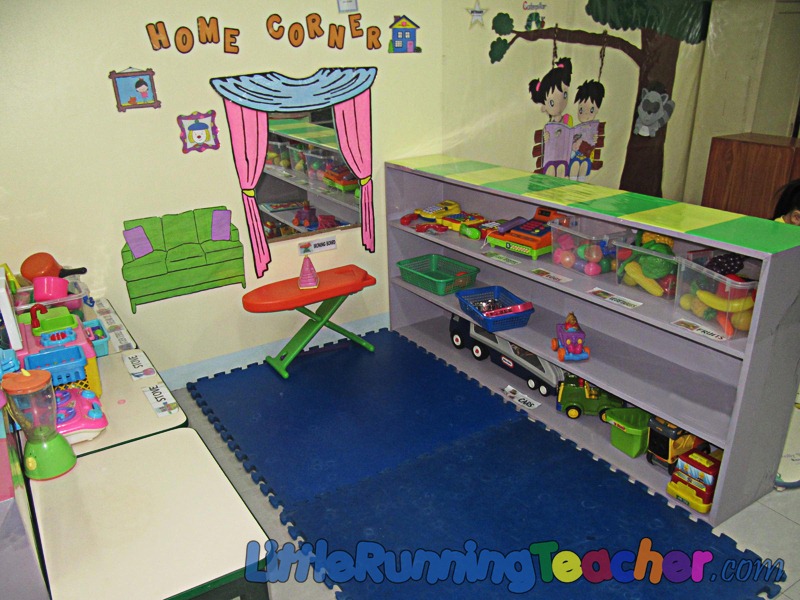
http://eslarticle.com/pub/teaching/reading/108367-Pedagogical-Practices-For-Early-Readers.html
Thanks for staying with me through this post. I hope you did not care spending your energy to it. Should you liked it there are way more about EFL teaching exercises and similar topics on here. Don't forget to check them out as you please and whenever you've got any insights on this share your ideas down below.
Conversation cards (Present Simple)
One activity I like to do with beginner and intermediate classes to really focus on conversation is to give them "conversation cards". When we have finished a lesson (for example: present simple) and before we have a test or quiz, we spend maybe 30 minutes on the conversation cards.
With that said it really is worth thinking about it with English as a second language in the front. As soon as you really dig through it and keep this in view I'm sure it will make a difference over a long term.
I'm not asking anyone need to stay with it regardless of what but considering it as a rough guidebook will make an impact.
There are two ways I like to use these cards. Either the students have permanent partners or groups and simply swap cards when they are finished with another group, or they rotate their partners as well. To rotate partners, I like to have the student who just answered a question take that card and now ask it to a new partner. That way, they are familiar with the vocabulary and context of the question and can explain it to the new partner.
The questions are intended to have grammar the students should be familiar with, and generally vocabulary they have seen before, but it keeps them excited to throw in a few strange questions (ex: "Do you like to look at the moon at night?") and new vocabulary (ex: "Do you like to ride a roller coaster?").
They are intended to be a challenge, but a controlled challenge, and generally the students finish the activity feeling more confident about being able to respond to a variety of topics.
Here is the two page present simple conversation cards.
Here is a blank template of the cards so you can write in your own questions.
http://tea-godzilla.blogspot.com/2013/07/conversation-cards-present-simple.html
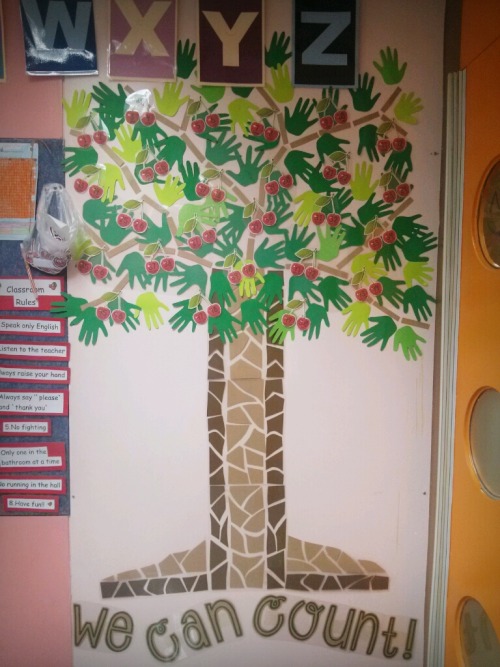
I wish you have found this post as interesting like I did. I am really interested in reading your thoughts concerning this inside the comments section. If it has got rised your interest on EFL teaching activities there are plenty of more on this on this site too.
Measuring Up Live
Every year, I have asked our ESOL program to purchase and online program called Measuring Up Live.

I have found that this program is a great resource for yearly, on-line SOL preparation. The standards on MUL correspond to Virginia Standards. In addition, I can select which standards I want my students to work on, which correspond to standards they are working on in their general Math, Science and Language Arts classes. For example, for Life Science and Physical Science, I can select the first category of “Scientific Investigation, Reasoning, and Logic.” I am able to monitor the progress of my student understanding and retention in this category via the administrative program. MUL provides a performance key of three levels “Below Proficient, Proficient, Advanced Proficient.” My student’s proficiency level is currently set at 70%, which then allows me to move them onto a new standard when they have shown me that they have obtained the measured goal for comprehension.
My students enjoy this program because it provides instantaneous feedback for students after every question is answered. If the student answers the questions incorrectly, an explanation of the incorrect answer is provided. Students are required to continue until they select the correct answer. Finally, students enjoy a small game after they answer 5 questions correctly.
"If a man does not keep pace with his companions, perhaps it is because he hears a different drummer. Let him step to the music which he hears, however measured or far away."
http://blogs.glnd.k12.va.us/rtown/2014/09/13/measuring-up-live/
If you'd prefer to learn more about ESL news you have to check out http://www.edutopia.org/. It has countless source of wonderful ideas to check out. I would quite like to hear your thoughts on the topic when you have anything to share. Leave a comment when you wish to.
Two Important Dropbox Tips for Teachers
"Teaching is a strategic act of engagement."
October 1, 2014
I am a big fan of Dottotech's Channel on Youtube. This is a channel run by Steve Dotto (executive producer of Dotto Tech, Canada's longest-running technology TV show). Steve shares some excellent tutorials and how-to videos on different technology hacks to help you enhance your productivity. Today, I am sharing with you a video he released recently covering two interesting tips to help you share Dropbox files in an efficient way.
The first tip is about using a tool called Send to Dropbox which I am sure many of you are aware of. for those who haven't used it yet, Send to Dropbox is a web tool that allows you to email file to your Dropbox. The process is simple and easy, just connect with Dropbox, get your unique email address that will be generated for you and start sending files. Steve's video shows you how to do it.
The second hack involves tweaking the URL of the file you want to share. Watch to learn more.
Follow us on : Twitter, Facebook , Google plus, Pinterest .

http://feedproxy.google.com/~r/educatorstechnology/pDkK/~3/amGcThtUV80/two-important-dropbox-tips-for-teachers.html

Thanks for staying with me in this piece. I hope you did not care dedicating your time regarding it. In case you liked it there are far more about teaching news as well as other topics on http://www.learningspy.co.uk/. Don't forget to take a look when you see fit and in case you may have any thoughts on this share your ideas down below.
This Is How Google Recommends You Stay Safe Online
The Internet can be a scary place. There are people on the web who are looking to take advantage of you for their own personal gain. There. I said it. These people are likely looking to confuse or convince you that they are someone you should be sharing important information with.
Well, I would not have guessed this. Normally I like innovative thoughts on outdated ideas as teaching exercises isn't like working on something fresh day after day. Sure it is not like picking in a warehouse throughout the day then again there's always something to change a tad. Even though you will not accept the beauty of life hides in the changes. Let's see how far we can go.
In an effort to improve your digital safety, Google has whipped up a handy chart that can be used by just about anyone looking to secure their online lives a bit more.
Don’t be afraid to flag inappropriate content
Got an iPad or other mobile device? Learn how to remote wipe it.
Love sharing stuff? Think twice before sending something.
Figure out what constitutes a normal email versus a suspicious email.
Got a PC? Keep that antivirus software running and up to date.
Never send sensitive information via email. Seriously.
There are of course dozens of other useful tips and tricks for maintaining your digital safety. These are just a few key ones that come personally recommended as they’ve helped me in the past. For example, I learned that you should think twice before contacting someone offering a ‘too good to be true’ deal on Zillow or Craigslist. A house for half the cost of our current house in the same neighborhood? Sweet! Oh, you want me to wire money to Alabama via Western Union? I’m going to have to pass on this one…
Here is Google’s handy chart designed to help you stay safe online. Hope it helps!



I hope you've found this article as remarkable as I did. I'm interested in hearing your words regarding it within the comments . When it has arouse your curiosity about EFL teaching activities you will find regarding this on http://www.educatorstechnology.com/ also.
Give Kids Some Control Over their Writing

We’re always told that kids write the best if they write what they know, but then we’re also told that they need to write to answer this prompt. So, how do we give kids a chance to have some control of their writing topics, and also prepare them to write for the prompts that show up on standardized tests all the way up to the college level?

The first step is to give them some sense of control in each and every writing task. Emphasize for them where their choice lies, so that they can look at the various ways to answer a question, providing their own voice along the
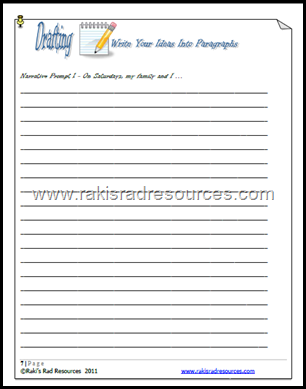 way. If you need them to practice writing a summary, let them choose the passage. If you need them to practice information writing, let them pick a topic they know a lot about. If you need them to practice fiction writing, let them include characters or settings that are familiar to their life or books or movies that they enjoy. When we grade writing prompts, we are always looking for “voice”, so we have to teach kids what their options are within the confines of the writing prompt, giving them the place to put their own voice.
way. If you need them to practice writing a summary, let them choose the passage. If you need them to practice information writing, let them pick a topic they know a lot about. If you need them to practice fiction writing, let them include characters or settings that are familiar to their life or books or movies that they enjoy. When we grade writing prompts, we are always looking for “voice”, so we have to teach kids what their options are within the confines of the writing prompt, giving them the place to put their own voice. Use a writing journal – like my Narrative Writing Journal – that gives students 9 weekly prompts, but let them choose the prompts they want to work on. Let them identify the prompts that make a connection for them and help them find their voice within each prompt.
Next, focus on organization. Model organization for students in whole group setting, and have students use an organizer, like an organized bubble map or an outline each time they write, so that they get the feeling for grouping their ideas together. Once students have a sense of organization, they are ready to break “out of the box” and add in the extra dialogue and examples that create voice. However, if we develop voice without organization, we get funny writing pieces that go nowhere and say nothing, which is not helpful to our students or their grade on those writing prompts.

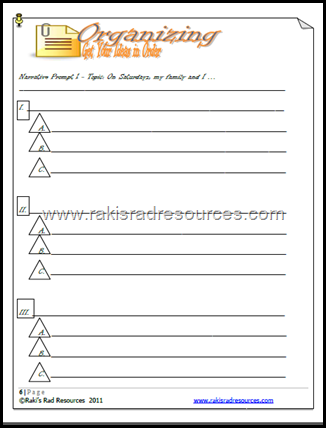
Improve revision and editing skills with the use of a specific checklist. Let kids peer – edit. Kids often find mistakes in their friends work, that they won’t find in their own. After kids peer-edit, conference with each pair to help students provide constructive criticism without hurting feelings. This may also be a good time to point out where one student is strong and may be of help to other students.
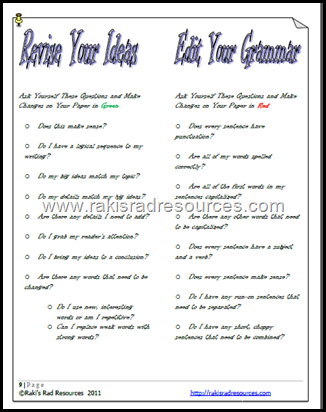
Finally, let kids choose what pieces they want to publish. Not every piece we write needs to be published, and students should start evaluating their own writing to choose which ones are their very best. Once they have picked their best work, they can “polish it to a spit shine” with extra revising and editing, as well as a fun way to publish – like typing it into a blog post or creating an online storybook at www.storybird.com.

Having said that it's worth thinking about it with teaching news in the front. Once you really drill through it whilst keep this in your mind I do believe it'll make a difference on the long term.
I am not saying that you ought to stick to it whatsoever yet following it as a rough guidebook could make an impact.
Here are a few writing pieces my kids have come out with recently, both done with only some very general parameters given and a good focus on structure and revising and editing:


Thanks for bearing with me through this post. I hope you didn't care devoting your energy to it. In case you liked it there are more about teaching and also other topics on http://www.edutopia.org/. Be sure to check them out whenever you please and if you might have any insights on this share your ideas beneath.
